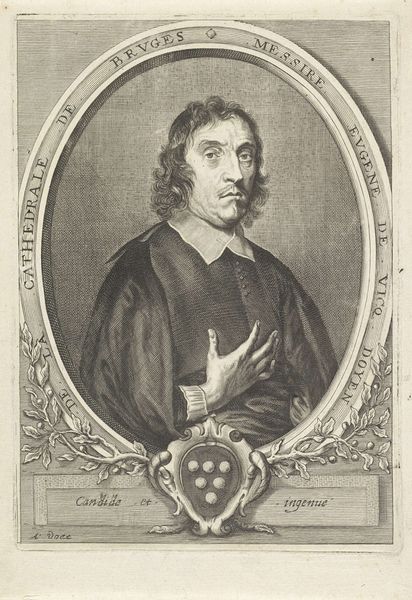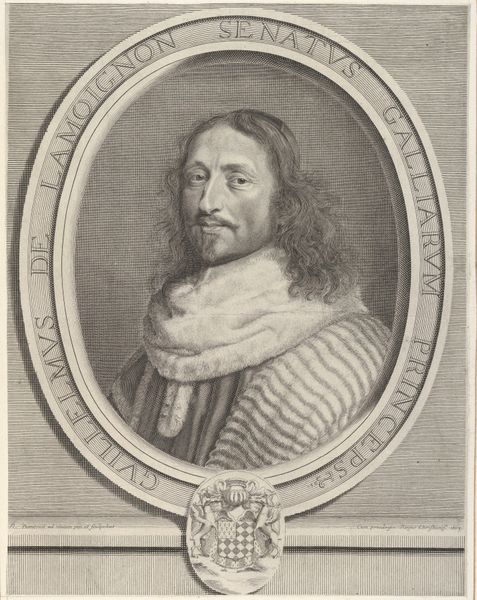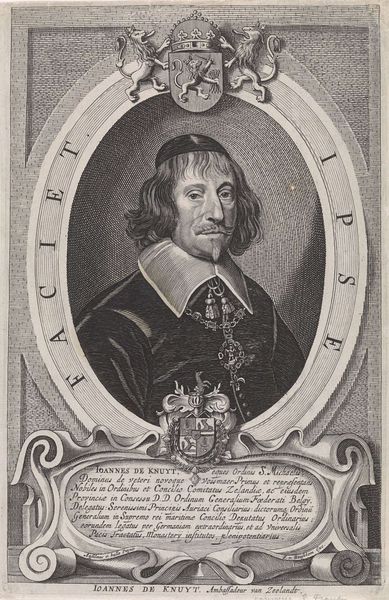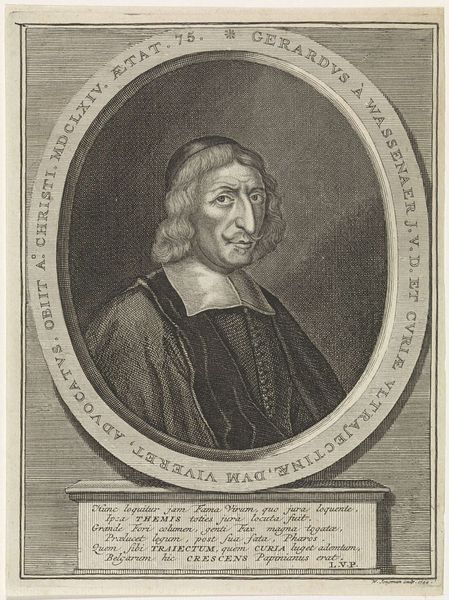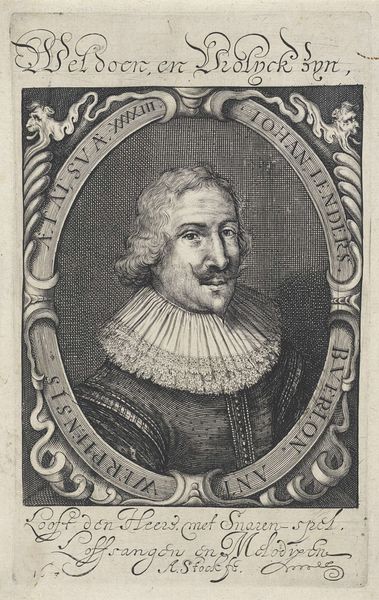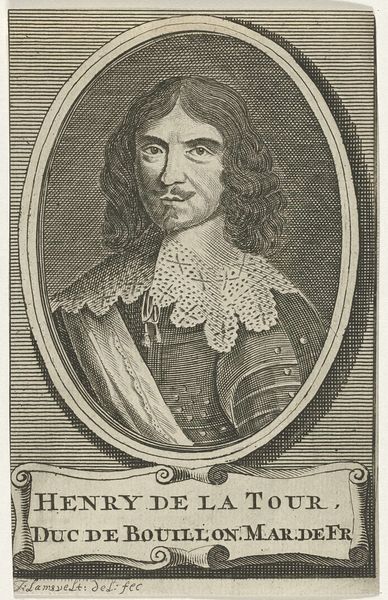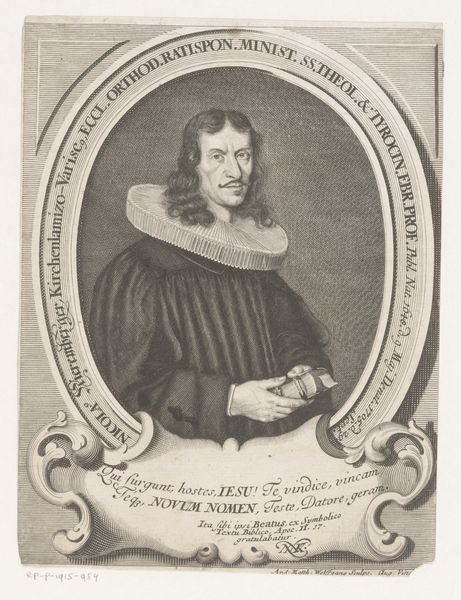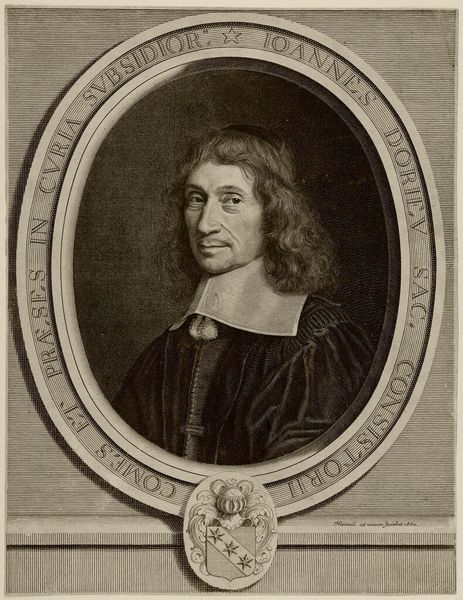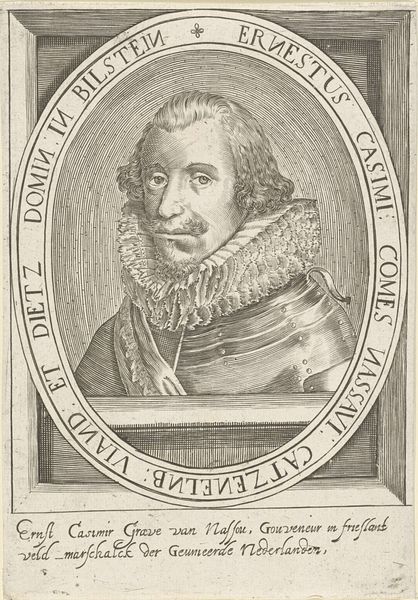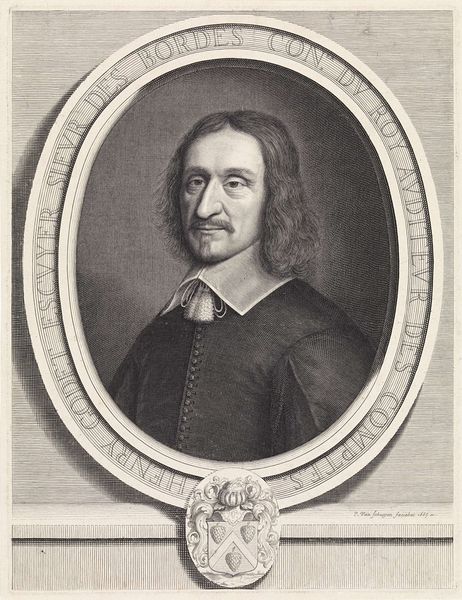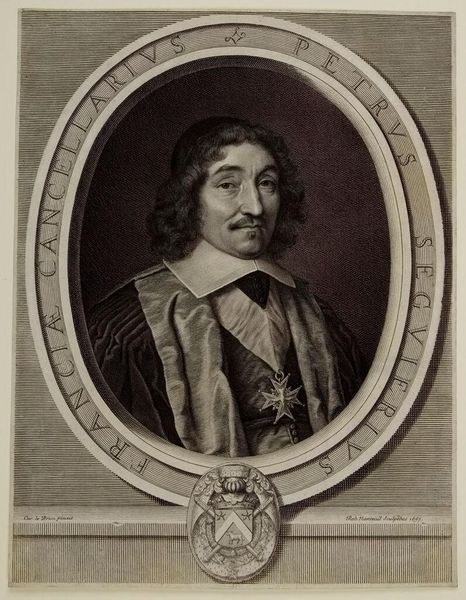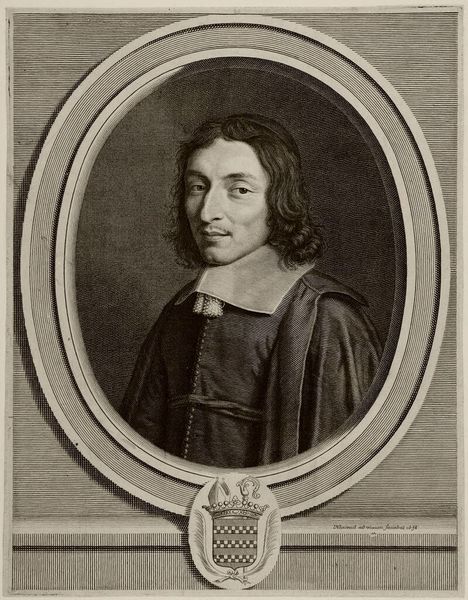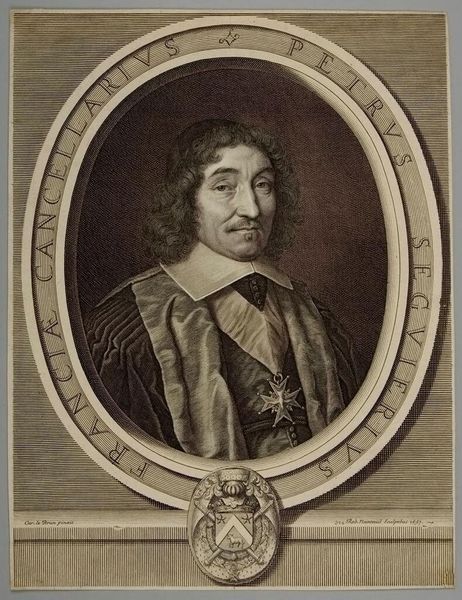
print, engraving
#
baroque
# print
#
history-painting
#
engraving
Dimensions: height 330 mm, width 217 mm
Copyright: Rijks Museum: Open Domain
Curator: Today we are looking at "Portret van Hendrik Meurs," an engraving executed sometime between 1639 and 1676, currently residing at the Rijksmuseum. Editor: My immediate impression is one of restrained intensity. The meticulous lines, the sharp contrast – it evokes a very particular mood, almost severe, yet the subject's expression hints at something more. Curator: Indeed. This work comes from the Baroque period, and it's fascinating to see how the artist, Theodor Matham, utilizes the engraving technique. What interests me is not merely the likeness of Hendrik Meurs, but what this image signifies within its socio-political context. It situates Meurs within a particular lineage of power and respectability during the Dutch Golden Age. Editor: Precisely! Note how the tightly controlled lines create form and texture, directing our eye. The oval frame, adorned with symbolic details, encases the portrait, and this layering—the frame within the print itself—reinforces a sense of importance. It draws upon Baroque strategies of the sublime by carefully calibrating a detailed space. Curator: Let’s consider the text inscribed at the bottom. It alludes to the ephemeral nature of life and art's capacity to transcend it. Meurs' spirit lives on through this print, an accessible and reproducible image. It highlights not just individual fame but speaks to broader concerns about immortality and memory in early modern society. The composition works to elevate Meurs in the context of life and afterlife. Editor: I am glad you brought this up, because the text exemplifies something fascinating about the visual economy of prints: they invite textual interpretations that can lead a viewer down different interpretative routes. And I like how you connect this back to Baroque conceptions of lasting fame and life through art. This makes the entire frame into something of a memorial, both visually and textually. Curator: It’s also compelling to think about how Meurs’ own identity may have been constructed and negotiated through such a representation, positioning him within a visual landscape deeply embedded in politics, religion, and class. It provides insight into not just Meurs but society as well. Editor: Analyzing form allows us to decode Baroque strategies and how they operated within cultural economies of value and status. Together, context and form grant us access to its subject. Curator: A fruitful intersection, allowing for rich insight into this intriguing engraving.
Comments
No comments
Be the first to comment and join the conversation on the ultimate creative platform.
